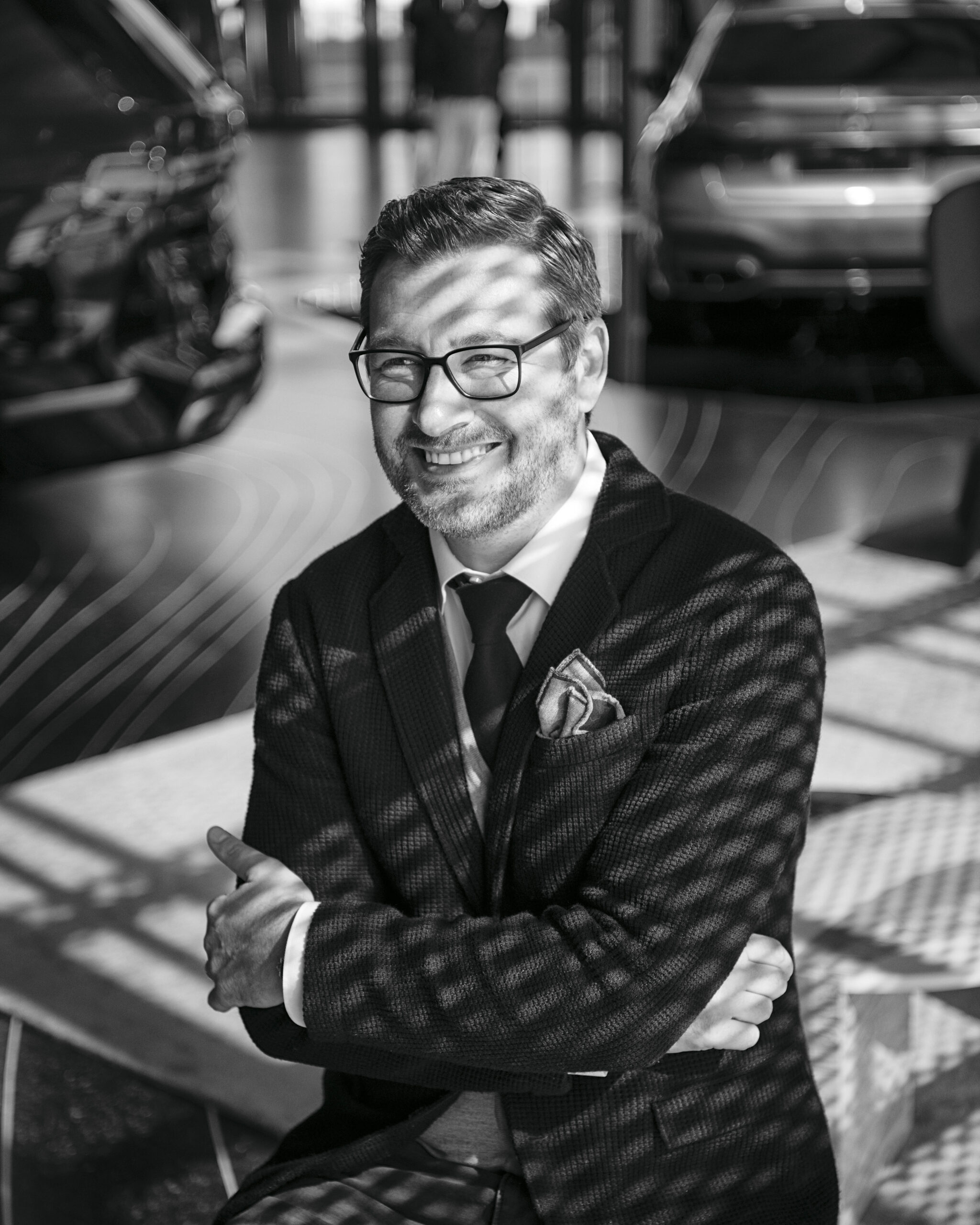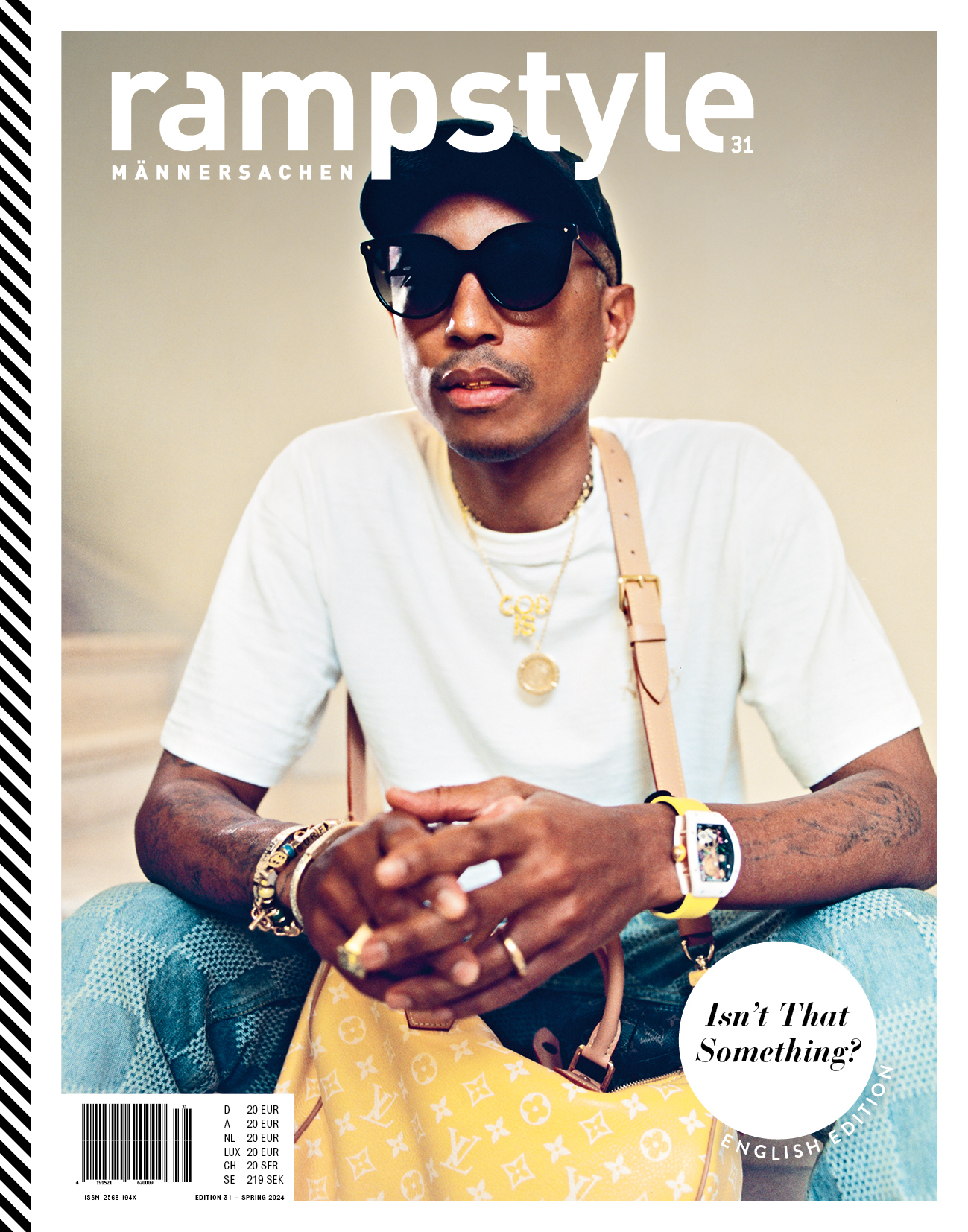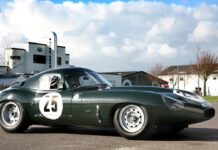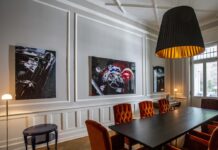Domagoj Dukec doesn’t like rules. But he doesn’t really feel comfortable if there aren’t any either. And as if that weren’t paradoxical enough, the BMW Head of Design sees himself as a creative rationalist.
It is precisely because of these contradictions, he says, that he’s the perfect man for the job.

The first question we like to ask in our interviews is: Who are you?
I recently read that people tend to describe themselves by what they have accumulated in life, by their name, their job description or their title. But that’s not who you are. Who you are is something completely different. It’s easy to know what’s on the surface, that’s what my CV is for. Anyway, I’ve always liked to sum myself up like this: I’m a creative rationalist.
With respect, that’s a paradox.
It is. And that’s probably why I fit in so well with BMW. BMW resolves apparent contradictions. It’s always one as well as the other. I’m naturally creative and feel like a free radical. I’ve never liked laws or rules, but if there aren’t any rules, I don’t feel comfortable either.
How does this contradiction play out in your work?
There is no manual or strict set of rules for good design. I also don’t have to go to museums or look at the competition to do my work well. Instead, things just come to me by way of intuition. At the same time, however, you also need a tactical approach when it comes to implementing ideas. You can’t just go to the decision makers and say, “Don’t you see how beautiful it is?” You have to proceed strategically in order to convince people. You have to show that to them from different angles, because everyone sees things differently. That requires a lot of rational thinking, but also a lot of creativity. And I think I’m quite good at combining these two extremes.
They say you always aim to make the other person smile. Why is that important to you?
A smile is something very important. It shows whether a person is warming up to an idea or closing themselves off. It is an acknowledgment or an affirmation of something you’re saying, even if the other person doesn’t agree with what you’re saying. So you have to try to elicit a smile from the other person, no matter what. Because it’s not just about what you’re saying, but also about how you’re saying it. Point is, you have to read people.
Does that work for you with the BMW board?
Not every member of the board is the same. They’re people like you and me. Just like different people find different things beautiful, different people find different things funny. First and foremost, it’s important to engage with someone and use the empathy you have as a creative person to understand the customer. The customers for me as a designer are first and foremost the people within the company who make the decisions. Before you even get to talk to the board, you meet a lot of very technically skilled engineers, where the ratio to designers is probably ninety-nine to one.
How can you do anything creative when designers are so outnumbered by engineers?
BMW clearly states that decisions are made on the basis of data. When billions are at stake, this obviously makes sense, and BMW’s success proves it right. But you can’t measure design empirically. Maybe long after, when the design is finished, you can retrospectively say that it sells well. But the appeal of a product usually depends on a whole host of different components.
What options does a designer have in a system like that?
Every designer chooses a different path through this process. In other words, designers don’t want to be just artists. They could be, but that’s not the same challenge, because there’s nothing to criticize in art. In art there are no customers in the traditional sense. Nor are there preset budgets or technical specifications. In our work, in industry, it’s something like a puzzle that you try to solve. The challenge is to make something impossible possible. That’s what motivates us. That’s what drives us on.
Successful automotive brands usually position themselves in the luxury segment. Luxury, in turn, is the freedom to be irrational. How important is it for design to surprise with the unexpected?
Clearly, BMW sees itself in the luxury segment. It was all premium in the past, but today premium means premium economy. Premium is the new normal. The BMW Group sees itself as having the best and most luxurious offering in every segment – including with Rolls-Royce or MINI. But BMW also has a relatively large production volume of two and a half million cars per year. In global terms, however, this is still a niche market. That means we don’t have to make everyone happy, but we do have to make those people happy within a certain affluent segment who are looking for something special.
And what is this something special that these customers are looking for?
Customers initially don’t just look at a product but opt for a brand because it stands for a certain image. That all happens before there even is a product or a design. People identify with the values that the brand stands for and want the brand to reflect on them, to help them succeed. Buying luxury products is an emotional decision, not a rational one. This is something that we at BMW have deeply internalized. And I’ve done the same with the design strategy.
Where does this irrational, emotional aspect of design manifest itself?
Wanting to have something, regardless of whether it fulfills all the necessary functions. It has to trigger something in people the way Apple or Tesla have done. Apple and Tesla were the first in their respective fields. Being the first creates a desire to belong. And that’s the only way to stay cutting edge. Because people believe they can set themselves apart from the other eight billion people on this planet.
Is it that simple? Don’t customers of such brands also have to make compromises in their decisions?
This desire results in many concessions being made. A Hermès bag is not so functional that you would climb Mount Everest with it. It’s the story behind it, the craftsmanship, everything that makes it special. It’s the same when you design something that you buy rationally and where the customer starts to read tests and compare. What do I get with this product versus the other? Then the customer might even go to the store and start negotiating the price. That doesn’t happen with Apple. An iPhone costs what it costs.
With an attitude like that, don’t you run the risk of not selling any products at all?
Of course, this will only work if you manage to move away from the attitude of “I need customers” to the attitude of “I want customers”. In other words, you have to move away from customers who need the product to those who absolutely have to have it. These are the people that will line up outside the store before it opens. To get there, you have to really get to know your customers and understand them extremely well.
It this a universally applicable principle that would work for BMW as well?
I wouldn’t say that. This only applies to people who find the BMW brand interesting already. If you want to grow by attracting ten percent of your competition’s customers, you have to pursue a different strategy. Then you have to focus on the people you want to reach and understand what triggers them to want something so badly. That obviously requires a psychological approach, but it’s always worked that way. No matter which product was iconic at some point, it didn’t just fall from the sky. It was deliberately designed.
Is the creation of an iconic product more a matter of chance or of strategy?
To establish a luxury product, you need a strategy. And you have to use this strategy to differentiate the product from others like it. This is the only way to get customers to say: I don’t know why, but I have to have this product because it’s different from the others in this or that aspect.
What exactly is this differentiation you are talking about?
Being different should never be an end in itself. Of course, the difference should always be meaningful and “wow” at the same time. That also needs to be part of the strategy. The “wow” is the first layer. It’s what grabs my attention. That can only happen if the product stands out from everything that’s already out there.
And what comes next after the “wow” factor?
The next factor is to be meaningful. A product is ultimately an extension of oneself. In this respect, it is important that you create a “wow” from the customer’s perspective so that the product triggers an “I want it!” response.
What role does your position as head of design play in this strategy?
The strategy has to convey the values of a brand emotionally. It is responsible for the experience that the customer has. This no longer involves merely one discipline as it used to be when you simply created a beautiful metal body. Of course, that remains an important discipline, but society’s values have changed with regard to what is relevant. The perception of status is also changing. Do I want to stand out? How “loud” do I want it to be? There are so many brands out there that people are starting to say they don’t want to see any more branding at all because they want to tone it down a bit. It’s about that experience of what a car feels like. “My car is an extension of my ecosystem.” That’s why topics such as color, materials or the interior are much more important today than they used to be. We’ve got assistance systems today that take over a lot of the work for you. You no longer have to just look at the road; you’ve got time to check out what’s to the left and to the right. Today we have to design things that you didn’t even have to think about in the past. People spend a lot more time in their cars these days because there’s a lot more traffic. This makes the time we spend in our cars so relevant. People don’t just want to sit there.
So the time we spend in our car is a relevant design criterion?
The difference between different makes and models will depend on which car you feel you are gaining quality time in and which you are losing quality time in. Can I spend time with my family in the car? Is it time well spent? You can see that the focus is very multidimensional. It’s no longer just about driving.
Do new perceptions like this also change the way designers see things, ultimately changing the brand’s whole design strategy?
The BMW design strategy has to stay authentic so that all the people who work for BMW can identify with it. We couldn’t suddenly do the exact opposite of what most people identify with the brand. The people who work for BMW don’t just work there because they couldn’t find anything else. People choose BMW. That goes for the customer who buys a BMW, but also for the employee who works there. And I want to be a part of that. The design strategy, especially for the New Class, also includes topics that are associated with a certain modesty. We don’t want to put the car on a pedestal.
Does this attitude resonate with the brand’s customers?
Our customers have always been classic social climbers, up-and-comers and doers. They want their personal development to be reflected in their products. More and more, our customers are also social drivers, opinion leaders. People who don’t just want to be the best in the world, but the best for the world. In other words, it’s about that certain extra something, as well as more experience, but not so visible, not so obvious. People also no longer want what used to be called “exclusive”. The word exclusive per se implies exclusion. But we want to make luxury more inclusive.
What does inclusive luxury look like at BMW?
Inclusive means also including people who are critical of wealth or of cars. A car is not a bad thing, it’s a great thing. You shouldn’t exclude people. When you design a car, you shouldn’t give anyone the feeling that it’s just a closed box on wheels. You have to open it up. Our customers aren’t just the millions of people who already own a BMW. It’s more than that.
Can you remember your first encounter with the BMW brand?
I can. And it’s probably the reason I chose this profession and ultimately ended up working here. Almost all designers had some talent for drawing as a child. Like me, they probably drew helicopters, airplanes and all sorts of technical things at kindergarten or somewhere else like that. I remember starting to look at the shapes and at the differences between them. That was around 1979, 1980, and the cars at the time were all Opel, Mercedes or BMW. The BMWs at the time were either an E9 or the 635 CSi. A few new models came along in 1979. These were my first BMW encounters. And it was the first time I thought that maybe I would like to do something with design later on. Drawing cars all day long seemed like a pretty nice way of earning a living.
And when did you realize that you wanted to work for BMW?
That was while I was at university. I knew that I wanted to work for BMW at some point, but I also knew that I didn’t want to go there immediately after graduating.
Why not?
Creative people can get satiated pretty quickly, especially when they’re still young. Once you feel like you understand something, you always need something new. I recognized that back then. And I didn’t want to go to BMW and three years later, in my youthful overconfidence, get bored and feel like I have to do something completely different. It was like that with my other career stages. I wanted to come to BMW with a certain level of maturity, so I wouldn’t give up on what I’ve always treasured and valued because of false ambition and hubris. And now I’m here.
Interview: Michael Köckritz for ramp
ramp #31 The Big Easy

Focusing on the essentials, blocking out everything else… If you’re focused, you’ve already mastered one important key skill. In our multimodal world, focus is, unfortunately, a rather limited resource. In particularly focused moments, we forget all about time. But do we run the risk of developing tunnel vision? Does focus lose its power over time? Do we become habituated? Far from it. Unexpected surprises? Bring ‘em on! Find out more










